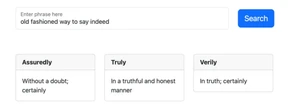If there’s one thing all parents can agree on, it’s that kids aren’t cheap. One study puts the average cost of raising a child at $21,000 a year, and that price tag often begins with daycare.
America has a well-known child care crisis: Daycare openings can be hard to find and, when you do land a spot, it often costs more than college tuition. Childcare has become so unaffordable that it’s forced some low- and middle-income mothers out of work. And those who can afford it often find that it’s their biggest expense, often matching or exceeding the cost of rent or mortgage.
So, when parents no longer have to pay for childcare, whether it’s because their child became school aged or they qualified for their state’s free pre-K programs, it might feel like a huge weight off their shoulders. And it does give breathing room for some, but for others, that money often goes into other needs for the child as they age, like summer camp.
Two 30-something parents based in Michigan shared their different experiences when they finally stopped paying for childcare for at least one of their children (they both requested their last names not be used for privacy reasons). While the extra money has allowed them more freedom, it’s also just getting reinvested into their children.
‘It gave me the freedom to quit my job, but I don’t really see it as money back in my pocket’
A 38-year-old business owner with a 3- and 6-year-oldAnnual household income: $160,000Annual childcare costs with two children in full time care: around $29,000
Current annual child costs:3-year-old Daycare: $14,541
6-year-oldAfter care: $3,210Child care for school breaks: $1,742Summer day camps: $3,170Total childcare expenses: $22,663Difference: about $6,000
Ariel put both of her children, three and six, in daycare when they were about 10 weeks old. She says that she felt lucky to grab spots in one of the lowest cost daycares in the Ann Arbor area, but that her family were still shelling out about $14,000 a year for each child.
When her oldest began kindergarten at their local public school last year and they could eliminate his childcare costs from their budget, she says her lifestyle didn’t really change much. Instead of the money being spent throughout the year, she says, it’s now spent seasonally.
“I don’t really see it as money back in my pocket,” the 38-year-old explains. “Because the money just goes back into the child—the kid is going to be off from school on days where you’re not off from work, so you have to find care for your child on those days.”She says a day camp can range between $75 to $100 for a day, and she has to do that at least once a month. And that’s not counting summer camps, which they’ve spent over $3,000 on, as well as activities and sports he’ll start participating in as he ages because it’s important to them as parents to expose their child to different things. She expects the same to happen when she stops paying childcare for her youngest child.
“We might have saved (about) $5,000 from no more daycare, but with higher food costs and costs in general, we are basically reinvesting the money back into our child or childcare for when he’s not in public school,” she says. They’ve since increased their contributions into both kids’ 529 savings, she adds, which they started two years ago but didn’t contribute to consistently. They’re now saving $10,000 a year into this fund.
But there is one thing that cutting childcare costs allowed her to do: quit her job as a marketing director to start her own nonprofit that serves mothers. “We went from a double income family to a single income family,” she says. Her husband is an engineer, and they’re now earning $160,000 on his salary while she gets her business off the ground.
“It was helpful that we don’t have a second daycare payment to make. That allows me to have the time to figure out what it is that I want to do, build something from nothing, and not have to feel the pressure of needing to find a job that pays me something,” she says. “That’s kind of an unseen benefit of the freedom to be able to think like that.”
‘The cost of childcare in America has flabbergasted me, I hadn’t bought myself jeans in 7 years’
A 35-year-old midwife with two kids:
Current annual household income: $217,000Previous annual daycare costs: $18,000
Annual babysitting costs: Over $1,500Annual childcare costs after 4-year-old entered free pre-K: $0
As a midwife and a sports writer, Meg and her husband worked an irregular schedule that allowed them to delay putting their children, now six and four, into childcare until they were each one year old—old enough to be distracting when Meg needed to get things done around the house.
They paid $1,500 a month to put both kids in childcare for three days a week, she says, not counting the babysitters they’d hire when they both had to work evenings or weekends which cost over $1,500 a year (they don’t have family in the area to help). “Our generation of parents have more student debt and less local family support than any generation before, with the highest costs of childcare ever,” she says, adding that the cost of childcare in America has “flabbergasted” her.
At the time, she was also paying $862 a month in private student loans (she paid that off in April) and $980 in federal student loans. She benefited from the pandemic student loan debt pause. “I don’t think we would have afforded our daycare if I also had to pay that student loan in those years,” she says. “We would have been cutting things left and right.”
It also helped that she switched jobs, getting a $30,000 raise. Over the past three years, she and her husband have increased their household income from $158,000 to $217,000.
When their oldest went to Young 5s in 2022—a free program in Michigan for children who don’t make the birthday cutoff for Kindergarten—they reallocated much of the childcare savings to their youngest child, increasing their daycare to four days a week for $975 a month. They also spent $2,000 on home renovations.
That’s been their plan for the next year, until Michigan expanded its Great Start Readiness Program, which provides free pre-K for four-year-olds. Until this year, it was based on parents’ income levels. Now, if there are open spots after the initial enrollment, it opens to anyone for free (it’s an $1,800 monthly value). Meg was lucky enough to grab a spot, and her youngest began the program just this month.
Now, Meg and her husband are completely free of childcare costs a year earlier than expected. Between the childcare savings and her remaining public student loans being forgiven in October through PSLF, she says they’ll have roughly $3,000 extra in their pockets every month.
“We’re lucky in that our jobs are flexible and that we don’t need 9-to-5 childcare all summer,” she says, explaining that they’ll be able to use this savings a little more freely than other parents might. While they haven’t decided exactly how to spend it, she’s mulling over doing some home improvement projects they’ve postponed, building up their savings, or fulfilling their dreams of buying a lake house.
For now, she’s going shopping. “I bought $120 jeans, which I haven’t bought in seven years,” she says. “None of that money has been for me.”










No comments